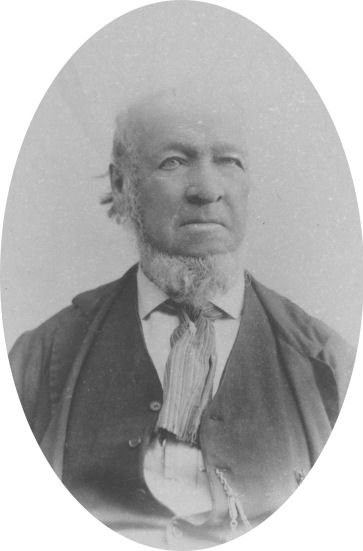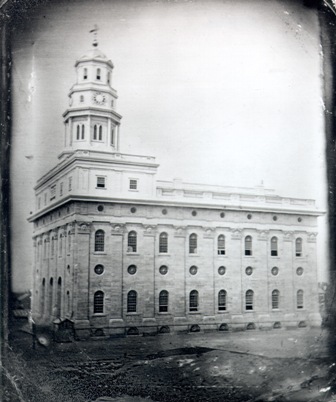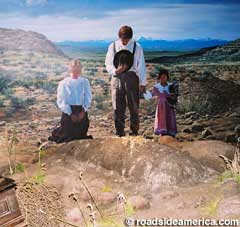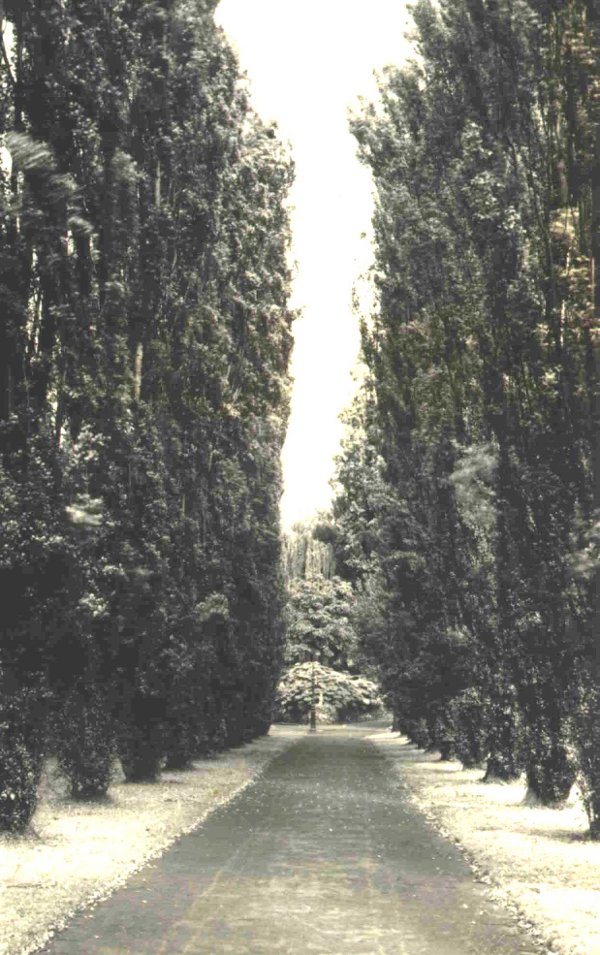John William Cooley
28 November 1811 – 11 November 1898
Living
on the frontier in the early nineteenth century afforded time for
little more than the basics of living. Good record keeping was
something that was often overlooked. Consequently few details have
been preserved beyond the essentials, such as births, marriages, and
deaths. Even then sometimes the information is sketchy or
contradictory.
For example we know that Daniel Cooley was born in 1781. One account gives his place of birth as Paris, Oneida County, New York and another says Connecticut. The families of both of his parents originated in Connecticut and eventually moved to New York State when land west of the Appalachian Mountains was made available for settlement after the colonies won their independence from Great Britain.
Another family that moved to New York State from Connecticut about that time was that of Solomon Butler. Their daughter, Mary Butler, was born on May 16, 1785 in Paris, Oneida County, New York. It was there that Daniel and Mary were married on March 5, 1806. At the time of their marriage, he was 24 and she was 21. The newlyweds made their home in Pairs where their first two children were born. Their first born was Mary Ann who was born on January 6, 1807. She was followed by Charles Rancler in 1809. It is possible that Charles died as child as there is no further information about him.
Sometime a year or two later Daniel and Mary moved their family about seventy miles northwest to New Haven, Oswego County, New York on the shore of Lake Ontario. It was there that John William Cooley, the subject of this story, was born on November 29, 1811. One more child, Lucy Ann, was added to the family in 1813. Nothing more is known about her life either. Neither is there any further mention of Daniel. It is possible that Lucy also died as a child. It is also possible that Daniel died sometime after that time.
Nothing more is known about the childhood years of John William Cooley. Sometime over the next several years he moved to Cramahe, New Castle District, Upper Canada (now Northumberland County, Ontario) on the north shore of Lake Ontario. John's sister, Mary Ann, married William Francis Liddle in Cramahe on March 5, 1832 and John married Hannah Gould on January 10, 1836 also in Cramahe. At the time of their marriage, John was 24 and Hannah was 21. Hannah was born on January 10, 1815 at Cramahe, New Castle District, Upper Canada to Seth Burr Gould and Hannah Sager. John and Hannah made their home in Cramahe where their first daughter, Gennette was born on December 20, 1836.
It was in Canada that John and Hannah first heard of and joined the Church of Jesus Christ of Latter Day Saints. They were baptized on November 12, 1838. John was ordained an Elder that same day. Hannah's older brother, John, had joined the church five years earlier and played an important roll in the early history of the church. When Hannah joined the church, resentment against the Mormons was high. Her family was so bitter that they disinherited her. She must have had great faith to have left her family and deprived herself of the easy living and comforts of wealth.
In 1840, John and Hannah decided to move to Nauvoo to be with the Saints there. Their journey took them by way of the many canals and rivers of the Northeast by boat. Just before they landed, one of Hannah's trunks fell overboard. It was recovered and when they came ashore the contents were spread to dry.
While living in Nauvoo John was one of the personal bodyguards of the Prophet Joseph Smith, for which his life was threatened. One occasion when he was sick in bed, a mob came to his house and taking his wife and daughter by the arms, took them to the door and told them that they would not want to see what they were going to do to that man. They tried to stab him with bayonets but he was protected through prayer. He asked his Heavenly Father for strength and springing from his bed, he put the mobbers out of the house. They were immediately filled with fear and wrath.
They endured the hardships of persecution and in the fall of 1842 or early spring of 1843, Hannah, expecting a second child and being in delicate health, took little Gennette and went to visit her parents in Cincinnati, Ohio. In March she was riding in a carriage drawn by a team of spirited horses. They became frightened and ran, throwing her from the carriage, causing the birth of her child, John Rancler Cooley and resulting in her death on March 15, 1843. She was buried in Cincinnati, Hamilton County, Ohio.
John
came for Gennette and little John but the baby had to be left with a
wet nurse in order to survive. It was agreed that he would stay until
he was one year
old, then they would return for him. But it was not to be so. John
returned several times to get the
child, but there was always some excuse to keep him there. Finally
they told him the baby died on April 24, 1846.

The Nauvoo Temple - 1846
He was ordained a seventy by one of the First Council of Seventy in 1844. It is not known when his mother, Mary Butler Cooley, was baptized and moved to Nauvoo. Perhaps it was after Hannah died that she moved to Nauvoo help John raise Gennette. Both John and his mother received their endowments in the Nauvoo Temple on January 5, 1846.
When Nauvoo was evacuated in 1846 John was called by Brigham Young to establish a mill northeast of Winter's Quarters in Pottawattamie County, Iowa. A settlement of several families known as Cooley's Camp or Cooley's Mill was established around the mill. His mother went with him as did his brother-in-law, John Gould. It was there that in 1849 John married Susan Jane Hunt (15 Oct 1828), who went by Jane. Two children were born to them while living in Iowa, Marietta who went by Net (8 Sep 1850) and Samuel William (2 Aug 1852).
In a letter written to President Brigham Young by Ezra T. Benson dated March 16, 1852, John William Cooley is listed as Captain of the First Big Pigeon Branch which consisted of two-hundred-thirty souls. They were reported as being perfectly united and all going to the valley that season and taking their poor with them. On April 7, 1852, he was reported to have addressed a conference in the Big Pigeon Tabernacle. On April 14, 1852. he was listed as being a member of the Thirtieth Quorum of Seventies residing in Pottawattamie County, Iowa.
In April of 1853, the family prepared for the long trip across the plains. The wagons assembled at "Six Mile Grove" on June 9, 1853, under the able leadership of John William Cooley and John Miller. A total of 282 souls and 70 wagons commenced the long journey. According to the company register, accompanying John (41) and Jane (24) were Gennette (16), Marietta (2), Sammie (infant), and Mary Butler Cooley (68). They had 3 wagons, 5 horses, 26 cattle, and 56 sheep.
Early in the morning of June 9ththe company began yoking up the oxen. Most of the men in the company were “greenhorns” with no experience in the art of teaming. The cattle were driven into the corral and they, with yokes and bows in hand were supposed to catch and yoke their teams. But unfortunately they did not know what to do. Many of them had never touched an ox before and the horns of the untrained steers made them very nervous. Consequently, Captains Miller and Cooley had to do nearly all the work. It was noon before they could start out.
A couple of days later, six or eight buffalo were sighted just on the other side of the Platte River probably twelve or fifteen miles away. Some men and dogs started after them. Again, they didn't know what they were doing and spooked the bison. The buffalo started off at a surprising pace, and the men soon found that they couldn't keep up so they tried to scatter the animals with their dogs.
John got on his horse, borrowed a large flintlock pistol from Captain Miller, and joined the hunt. His horse carried him well, and he soon caught up with one of the animals. He rode around it once or twice, then extended his pistol with the intention of firing, but it failed to discharge. He stopped his horse, examined the pistol and slowly turned toward camp. In his hurry, he had either shaken the powder out of the gun or had started without any. Either way it was a pity, for he was an excellent shot. Captain Miller gave the word to move on. The whip cracked, the wagon wheels began to roll on again.
On June 17th John's gray mare, a valuable animal, was left on the trail unable to go any farther — she died during the night or the next day. Three days later he lost an ox which got mired on the west side of the river near the camp.
Being responsible for the company, He and Captain Miller had to solve disputes and resolve issues that arose in the course of the journey. Dealing with death was a constant issue.
Around
10 o'clock on the night of July 9, 1853, while camped at Shepherd's
Creek, John and Jane's baby died. To see Sammy struggling for
several days, they were helpless to do anything for him. Grief
stricken, they buried the child on a ridge extending down from the
bluffs near Shepherds Creek, a little ways off the road. A board was
placed at the head of the grave with the following inscription: "S.
W. Cooley, age 11 months, son of J.W. Cooley.” The company
commenced their journey at twelve o'clock.

On the 23rd of July, a rear wheel broke on one of John's wagons. Someone else broke an axle the same day. The company camped for a few days to make repairs and rest their animals. They pressed onward and the company arrived in the Salt Lake Valley on September 9, 1853.
For the first couple of years, they resided at Cottonwood (now Holladay, Utah) where they were sent to settle. It was here that Nancy Jane, who went by Tobie, was born on June 5, 1854. However, they were not there long and in 1855 they moved to Grantsville, Tooele County. That summer the grasshoppers came so thick they darkened the sun and destroyed the crops. It was decided to declare war upon the unwelcome horde. John acted as leader in the attempt to save what they could of their crops. He had the livestock driven back and forth over the most infested area which proved very successful in crushing the pests, destroying many of them.
On Mach 19, 1856 another daughter, Miranda, who went by Minnie, was born. That year was a year of the famine. A good horse would not buy a sack of flour. Many were without bread for months living on sargon thistle roots. Those who had milk to add to their diet were very fortunate. John had a patch of barley. When it ripened, guards were placed over it to keep the hungry people from going in and helping themselves and trample down the remainder of the crop. When it was thrashed, he gave each family a half a bushel. Some of it was ground to make cakes for the Fourth of July celebration.
On
July 10, 1856 John also married Jane's younger sister, Nancy Johanna
Penelope Hunt (1 Aug 1842), in the Endowment House in Salt Lake City.
At the same time, he was sealed to Jane and by proxy to his first
wife, Hannah. It was also that summer
that John's mother, Mary Butler Cooley, died in Grantsville on August
1, 1856 at the age of 71. Jane had two more children; Juliet (18 Dec
1857) and John William, Jr. (25 Aug 1859). By this time, his
daughter Gennette married Encoh Rhodes Dayley on December 29, 1858 in
Grantsville.

Nancy Hunt Cooley
Nancy had eight children; Susan Penelope who went by Penny (5 Jan 1858), Daniel (10 Jan 1860), Hannah (12 Jan 1862), Fannie Elizabeth (9 Sep 1864), Mary Amber (6 Nov 1866), Charles Franklin who went by Frank (8 Jun 1869), James Sidney who went by Jim (8 Feb 1871), and Edith Elmira (12 Mar 1879).
John was involved in the civic affairs of Tooele County and Granstsville. In 1857 he was one of three representatives from Tooele County for the Deseret Agriculture and Manufacturing Society. He was also on the committee for the arrangements of the Fourth of July Celebration entertainment. In 1860 the Deseret Agriculture and Manufacturing Society was orgainized in Grantsville and he was named a member of the board of directors.
During 1858, John contracted to feed mules and oxen belonging to Johnson's Army, who were camped at Camp Floyd in Cedar Valley. During the winter of 1858-59, the soldiers brought their mules and oxen to Grantsville to be fed. They paid him forty dollars for a ton of hay and one dollar per cubic yard for straw. However, many of the animals were very weak before they arrived in Grantsville and therefore, some died during the winter.
In return, the Army sold provisions and wagons at a discount. The soldiers were kind, sociable, friendly, and liberal in measurements and weights. In the auction of mules, oxen, wagons, and equipment, they did not persistently urge for higher bids. Therefore the articles were often acquired at no more than they would have cost in the East.
John had blue eyes and in later life he weighed two hundred and twenty pounds although he was well proportioned and didn't have the appearance of being heavy. He always had some parched corn or wheat in his pockets, which he could munch on as he wandered around his farm. He took a great deal of interest in his farm and always carried a hoe over his shoulder ready to chop down a thistle or weed that may have sprung up. On October 9, 1859 he won the prize at the fair for having the best-fenced and cultivated farm. Damp meadowland and trees made it contrast with the land in the area, much of which was dry land or yet uncultivated because of the lack of water.
Herman
Severe was living on the land when John first moved to Grantsville.
They were always great friends and were the ones who planted the
Lombardy Poplars along both sides of the lane that made it one of the
more beautiful spots in town. He could justly be proud to have it
bare his name – "Cooley Lane". Anyone who has been to the
State of New York can understand why that place and it's care would
be so important to him. Damp meadowland and trees made it look much
like the country from which he had come.

John was a good judge of horses as well as a good farmer. He could tell the disposition of a colt that was being broke, as to whether or not it would be a good animal, merely by looking at it. Due to the gold mines in California and Nevada, many of the people traveling through the country that stopped at Grandfather's paid for the care of the animals with gold. There being no banks in the town at that time, he occasionally hid it in the ground for protection.
The citizens of the community realized early the need for a sawmill. One was started at Fishing Creek, but John soon opened one in North Willow Canyon. It was operated by water power, a penstock (a sluice or gate or intake structure that controls water flow) was built to increase the power of the wheel. This mill soon became more popular because of its accessibility to timber, which cut down the expense of handling and hauling the timber.
There is some argument as to who had the first store in Grantsville, John Cooley or Mrs. Ott. He was the first to apply for a license to run a business establishment under the city charter which was granted June 25, 1867. John operated a store just west of the old adobe church/schoolhouse building. Quite a variety of dry goods and most staple groceries were carried in the small store. John did not take an active part in running the store but rather had someone else manage it. His wife, Jane ran a hotel for travelers.
In 1870, a fugitive who had killed a United States Marshall was seen at the mouth of South Willow Canyon. The constable from Tooele soon realized that he needed more men, so he sent to Grantsville for help. John was one of the party led by Samuel Wooley as Captain. At that time, John proved himself to be willing and courageous. He was given credit by some for having saved lives by his ability to act quickly in an emergency. Once again, the pioneer settlers had followed the admonition of their leaders to honor and sustain the laws of the land in which they lived.
John Cooley and George Carter sent for an auger from back east for drilling wells. They first attempted to drill a well behind his barn in 1876, but this proved unsuccessful as the auger got wedged. The first well they got to bring water was south of the house. Grantsville is given the credit for having the first well drilled in Utah. Later the first weeping willow tree in the community was planted near this well.
By
this time John was getting older and retired. He slowed down
somewhat, but remained active for the next several years. In
1897, his son-in-law, Al Judd, moved John to Basin, Idaho from
Grantsville to live with his daughter Genette and her family. They
made the trip by way of Timpie, Lakeside, Newfoundland, Blue Valley,
and Grouse Creek. The road was nothing more than a track across the
country but was passable at that time of year.

John William Cooley,s
grave in Basin, Idaho.
John rode in his light buggy drawn by his best horse and Al and his son, Roy, drove the wagon loaded with John's personal belongings and supplies. It was a heavy load and made slow traveling across the sandy flats. John was impatient and would drive ahead for several miles and then either wait for the wagon to catch up or drive back to meet it. It was in Basin, Cassia County, Idaho that John William Cooley passed away on November 17, 1898 at the age of eighty-seven years and was buried in the Basin Cemetery. His wives, Jane and Nancy lived a few more years. Jane died in Salt Lake City on April 22, 1908 and Nancy died in Grantsville on September 29, 1909.
* * * * * * * *
The main source of this story is from history sent to Winnie Osterhout in September 1954 by V. Cooley, 1954 South 11th East in Salt Lake City.
Some parts were take from the life story of Gennette Cooley Dayley